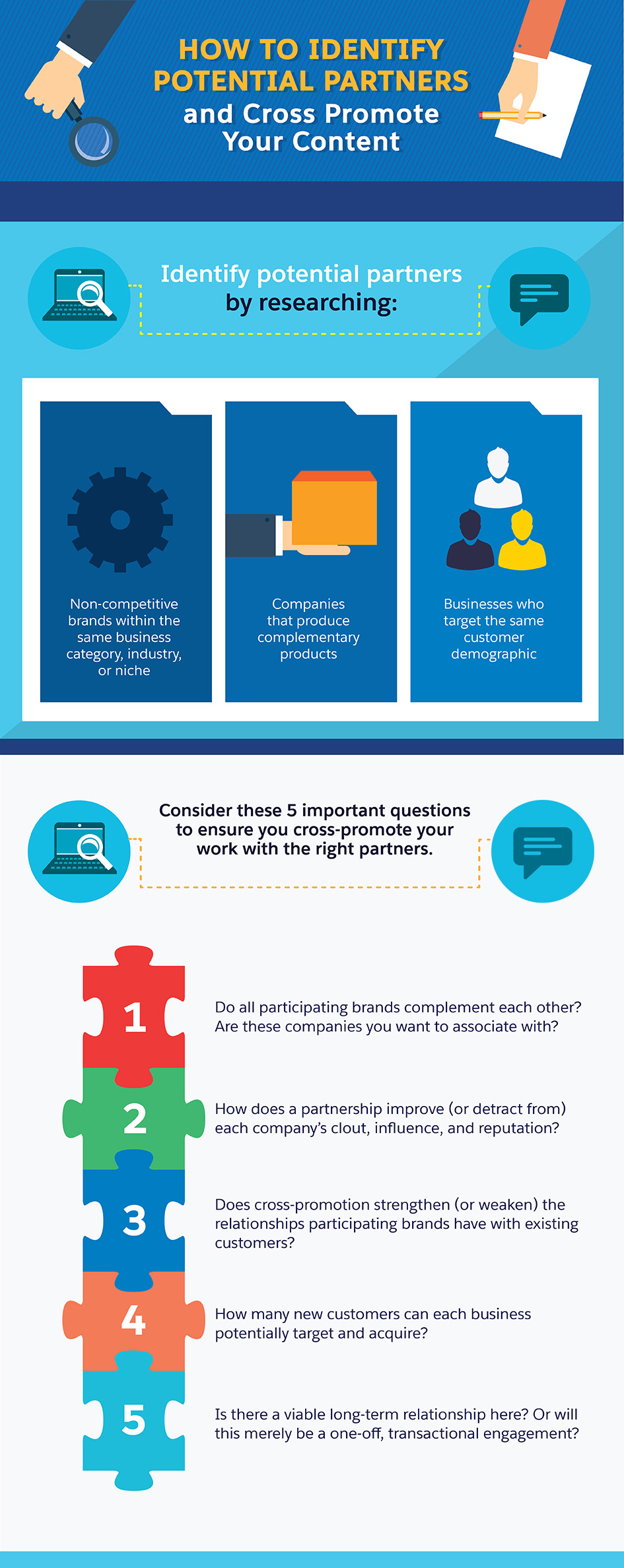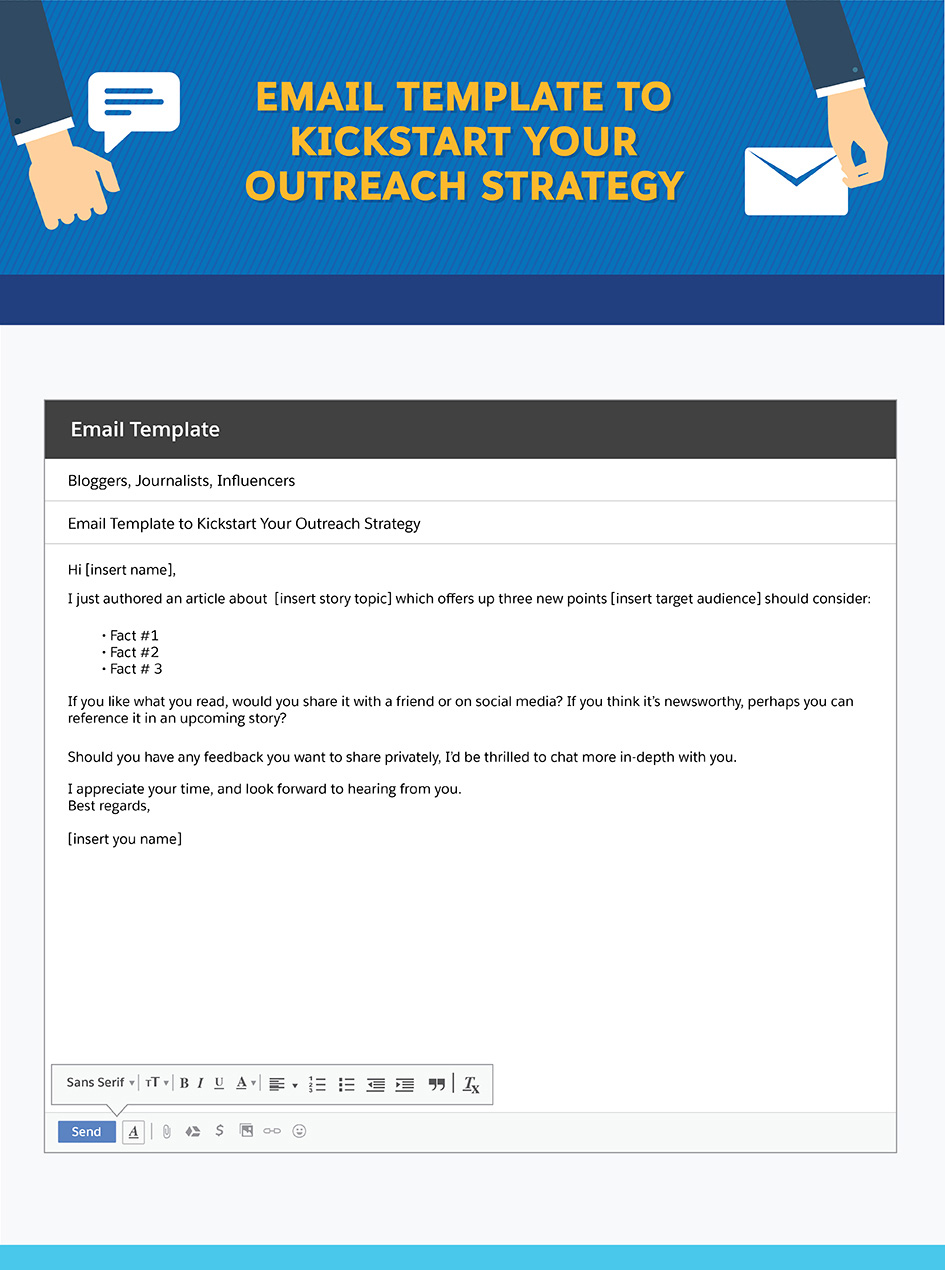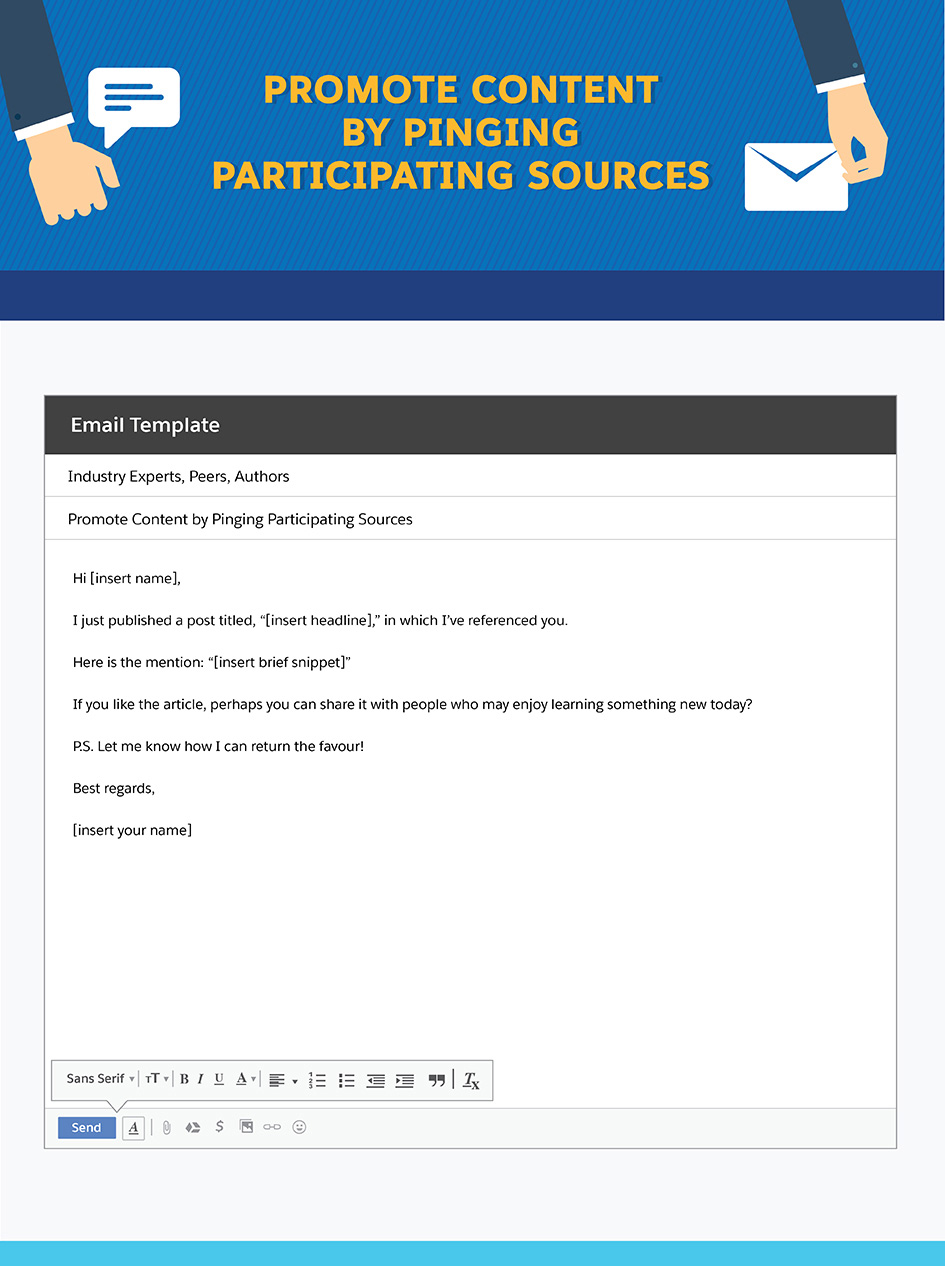An editorial strategy without distribution disappoints brands and marketers invested in the thoughtful creation and production of quality content. Businesses that invest resources to develop blog posts, video, and other multimedia should also allocate time and budget toward amplifying the overall reach of their content, both through organic and paid distribution. Content strategist Steven Rubel believes the most successful brands “take a journalistic mindset and distribution-centric thinking.”
Carefully crafted content is nothing if businesses cannot find eager readers willing to consume it and take action. For ROI-minded marketers, tapping the right audiences can turn content marketing into a company’s number one acquisition channel. Here are seven worthwhile strategies to help place your stories in front of the audiences they deserve and capture visitors who will convert to interested prospects, and then clients.
1. Cross-promote your content
Every brand publisher dreams of building a massive, home-grown readership. But even the best business blogs can use a boost from strategic partners with access to consumers who may appreciate the pieces you publish and the products or services you offer.
You can identify potential partners by researching:
- Non-competitive brands within the same business category, industry, or niche
- Companies that produce complementary products
- Businesses that target the same customer demographic
Connect with these firms to explore ways to plug your branded content within their email newsletters, social media posts, and marketing collateral, and make it worth their while. Potential partners will evaluate your ask based on two criteria: what they could gain and how their customers could benefit. Financial incentives can work, such as email sponsorship, discounted services, or free product. But special treatment, including exclusive access to content, may be preferred.
To ensure you cross-promote your work with the right partners, consider these five important questions:
- Do all participating brands complement each other? Are these companies you want to associate with?
- How does a partnership improve (or detract from) each company’s clout, influence, and reputation?
- Does cross-promotion strengthen (or weaken) the relationships participating brands have with existing customers?
- How many new customers can each business potentially target and acquire?
- Is there a viable long-term relationship here? Or will this merely be a one-off, transactional engagement?
The answers help both parties decide whether or not it is worth investing in each other’s success. In due time, you will find a handful of like-minded businesses to partner with to dramatically accelerate growth.
How to Identify Potential Partners and Cross Promote Your Content
Identify potential partners by researching:
- Non-competitive brands within the same business category, industry, or niche
- Companies that produce complementary products
- Businesses who target the same customer demographic
Consider these 5 important questions to ensure you cross-promote your work with the right partners.
- Do all participating brands complement each other? Are these companies you want to associate with?
- How does a partnership improve (or detract from) each company’s clout, influence, and reputation?
- Does cross-promotion strengthen (or weaken) the relationships participating brands have with existing customers?
- How many new customers can each business potentially target and acquire?
- Is there a viable long-term relationship here? Or will this merely be a one-off, transactional engagement?

2. Publicize your work
Bloggers, influencers, and journalists in your niche may love the content you publish; they just have to discover it. Therefore, you must commit resources to cold outreach. Other writers may happily reference your work if it adds depth to topics they cover and is newsworthy.
The best way to perform cold outreach is with personalized emails showing you performed due diligence. Explain how and why your work is right for them and their audiences. Start with a basic template and build your case for each individual or business. Here is an email template to kickstart your outreach strategy:
Email Template to Kick Start Your Outreach Strategy
To: Bloggers, Journalists, Influencers
Subject: Email Template to Kickstart Your Outreach Strategy
Hi [insert name]
I just authored an article about [insert story topic] which offers up three new points [insert target audience] should consider:
- Fact #1
- Fact #2
- Fact #3
If you like what you read, would you share it with a friend or on social media? If you think it’s newsworthy, perhaps you can reference it in an upcoming story?
Should you have any feedback you want to share privately, I’d be thrilled to chat more in-depth with you.
I appreciate your time, and look forward to hearing from you.
Best regards,
[insert your name]

This approach allows you to organically build relationships with influential people within your industry and generate positive press for your brand and your content.
3. Syndicate it widely
Whenever possible, access audiences from both mainstream blogs and industry-specific publications through syndication. Highly trafficked news sites often republish content from specialty brand blogs to further bolster page views and share unique perspectives from industry thought leaders. Smaller niche sites also feature syndicated stories their readers may not otherwise discover.
By giving publishers permission to repost articles from your blog, your content reaches tons of new, potential buyers with marginal effort, even after you click “publish.”
A few reputable sites which syndicate stories from third parties include:
- Content aggregators
- Business 2 Community
- Social Media Today
- Open publishing platforms
- Medium
- Quora
- Mainstream and industry blogs
- Business Insider
- Entrepreneur
- Lifehacker
- Search Engine Journal
- The Huffington Post
Content aggregators regularly review the latest articles from your RSS feed to republish. Often all you need to do is set them up. Once you create a syndication account, aggregators automatically add your newest posts to the approval queues, and within hours, your syndicated post goes live.
Open publishing platforms involve a bit more manual effort with each blog post. You will need to copy and paste your stories for syndication. Fortunately, you have the freedom to edit the post with a new headline and updated copy for either testing purposes, or to fit the style and format of a particular site.
Mainstream and industry blogs usually deliver high volumes of traffic along with well-qualified leads. But setup is harder and syndication arrangements tend to require more maintenance and upkeep. To secure contributor columns and enable syndication, first identify editorial contacts at publications of interest. Then, pitch those individuals with a guest post to start. Once you have demonstrated your expertise, you can suggest the idea of syndication. Afterwards, you may contact your editor weekly or monthly with top posts you published recently, which his or her readers may like.
4. Self-promote on relevant forums
Forums are a treasure trove of qualified leads and targeted sales. But in order to succeed with forum marketing, remember these communities are filled with passionate topic enthusiasts who care very much about authenticity, honesty, and transparency. Active members will drive spammy brands and users away, so engagement and participation on your part are key.
To become a valued member of these communities, here are several steps:
- Create an account and fill out your profile with the right disclosures and facts that demonstrate domain expertise.
- Reference posting guidelines to ensure you do not overstep boundaries when commenting on posts, sharing related articles, or distributing your own work.
- Read threads that interest you, listen to users’ needs, and contribute to ongoing conversations to develop community karma.
Only then will you be allowed to promote your content tastefully, with less risk of getting banned from the forum. Over time, fellow members may become brand evangelists who distribute your articles for you.
5. Pay for amplification
Advertising is a must for quality content to flourish. The ability to target consumers by demographic and interest allows you to reach large audiences who are guaranteed to enjoy your articles and will hopefully become paying customers.
- Four of the best ways to advertise your blog are:
- Banner and display ads
- Content recommendation networks
- Pay-per-click search marketing
- Sponsored social media posts
Set a modest budget to test each of these paid channels and evaluate return on investment over the next few weeks. Scale your marketing spend accordingly, as you identify the top performing advertising platforms which consistently deliver conversions and sales.
6. Ping participating sources
Every instance in which you reference an industry expert, quote a peer, or link to another author’s article is an opportunity to engage that individual as soon as your story goes live.
Email sources to let them know you mentioned them in your post. Use a template like this:
Email template: Promote Content by Pinging Participating Sources
To: Industry Experts, Peers, Authors
Subject: Promote Content by Pinging Participating Sources
Hi [insert name],
I just published a post titled, “[insert headline],” in which I’ve referenced you.
Here is the mention: “[insert brief snippet]”
If you like the article, perhaps you can share it with people who may enjoy learning something new today?
P.S. Let me know how I can return the favour!
Best regards,
[insert your name]

If email fails, you may turn to social media to reach them directly by sending a message on LinkedIn or tweeting at them. Or you can mention them in a public post sharing your article by plugging their name in a Facebook status update or including their Twitter handle in a tweet. Many times, doing the latter encourages your source to share or retweet your post. This also lends credibility to your story when your social media fans and followers see a familiar name included within your post.
7. Target qualified contacts
Most visitors never get past the first paragraph of an article, if they read any of the text at all. Fickle audiences, prone to distraction, won’t even give your content a fighting chance. The reasons are numerous:
- People are busy
- Competition for reader mindshare is high
- The content is irrelevant
- Readers discovered your post through less trustworthy sources
- Your pages load slowly
- Visual assets are either non-existent or not engaging
Although you may not have the resources to overcome all of these obstacles, reaching out to contacts who may learn something from one of your articles can have a dramatic impact on its readability. Direct message, email, or privately share stories that acquaintances, associates, and social connections will value enough to bookmark and reference regularly.
Closing thoughts
Your content deserves an audience that will both appreciate the advice you share and become brand loyalists. Therefore, invest in distribution as much as you do in production. Soon enough, you will see the ROI multiply as you generate more traffic, leads, and sales.
Share "7 Content Promotion Strategies That Drive Traffic, Leads, and Sales" On Your Site




